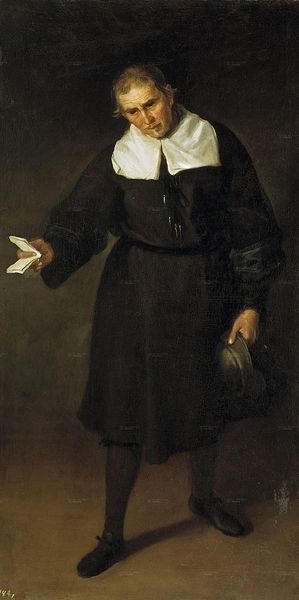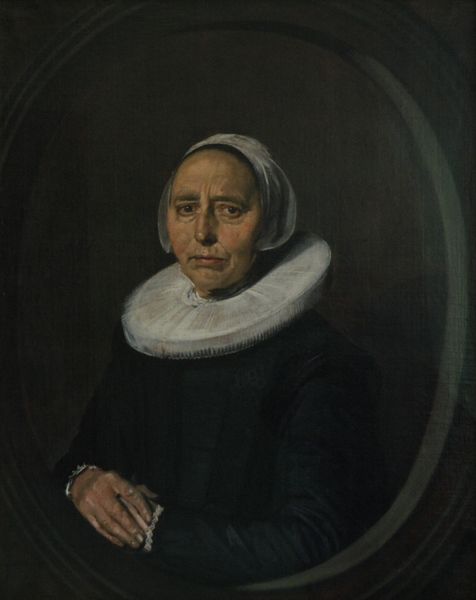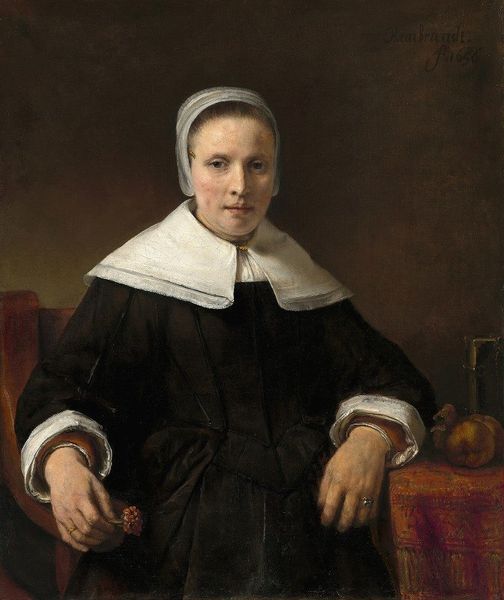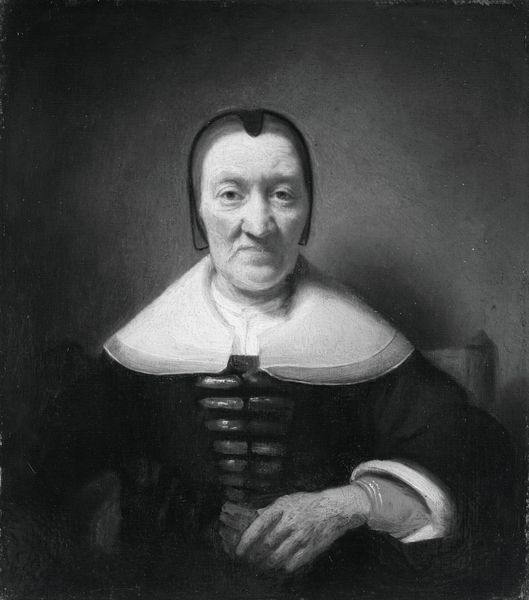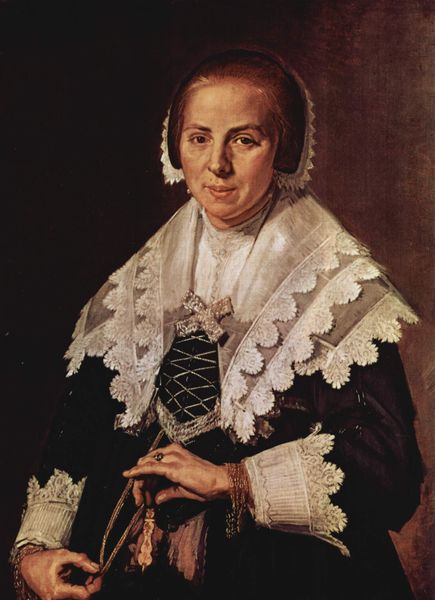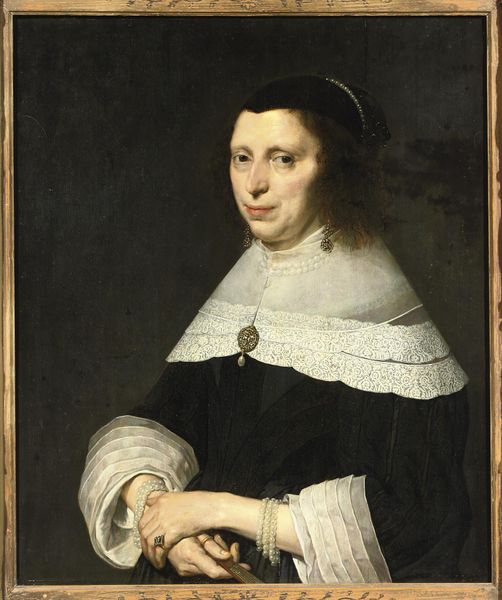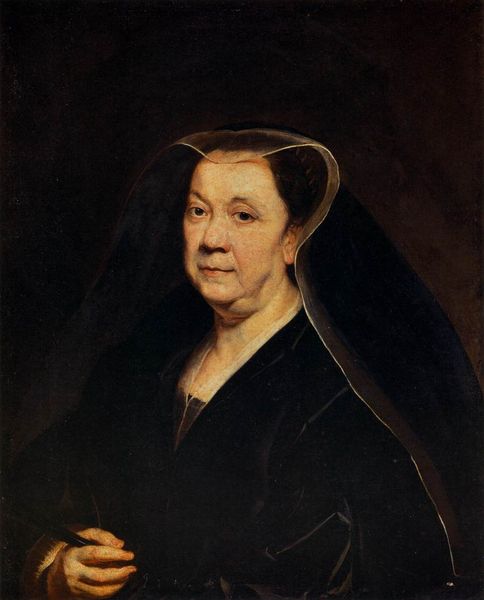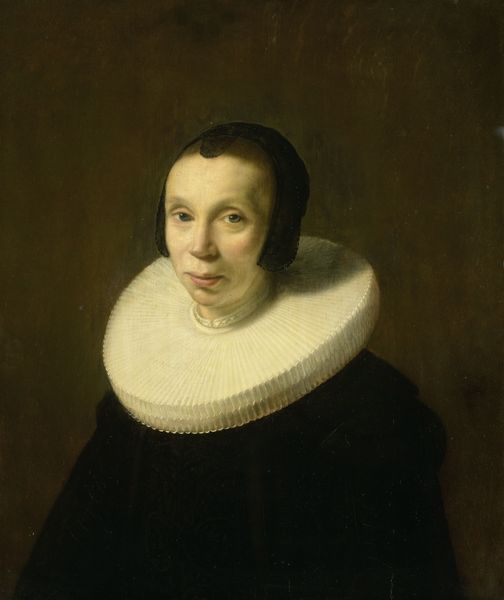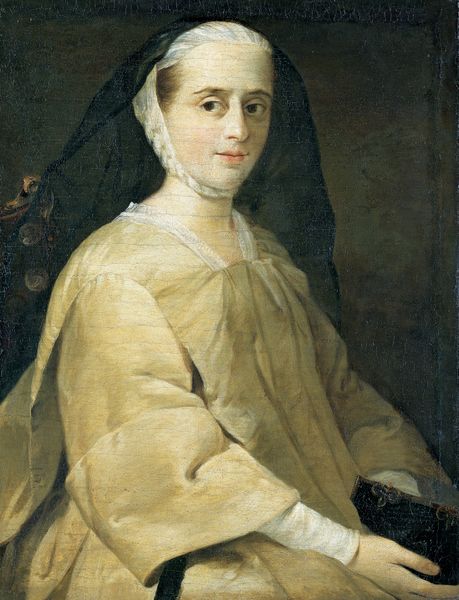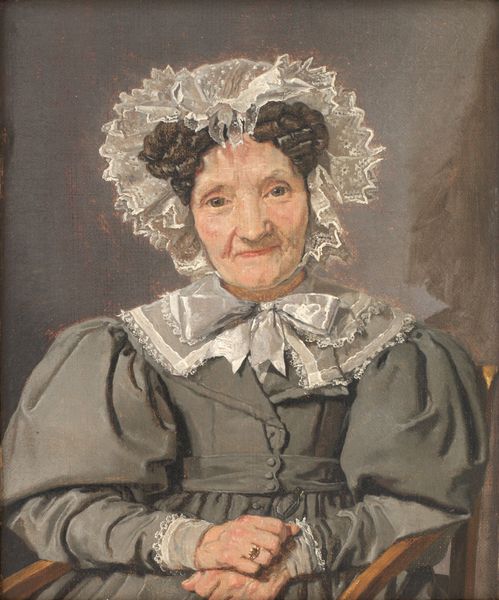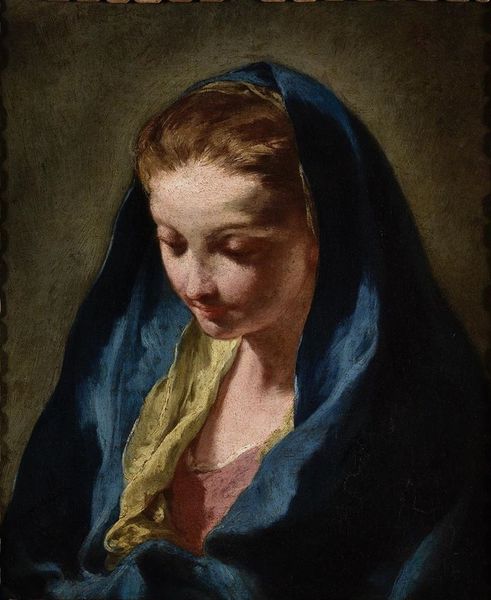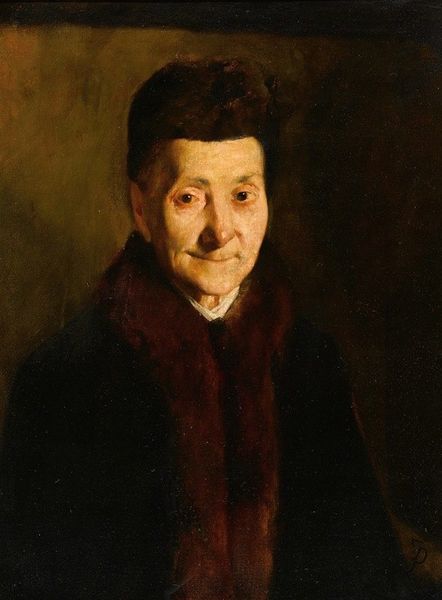
Detail of Two Figures from ‘The Regentesses of the Old Men’s Almshouse, Haarlem,’ after Frans Hals 1880
0:00
0:00
Copyright: Public Domain: Artvee
Curator: This oil-on-canvas painting is John Singer Sargent’s “Detail of Two Figures from ‘The Regentesses of the Old Men’s Almshouse, Haarlem, after Frans Hals’,” created in 1880. Editor: I find myself drawn to the almost stark contrast in tonality, the way the light struggles to break through the darkness surrounding these figures. There's a subdued quality to the palette itself. Curator: Sargent made this work after viewing Frans Hals’ group portrait, reflecting a fascination with Dutch masters who portrayed the wealthy elite of the 17th century. The Almshouse was a charitable institution for elderly men. Sargent here focuses on the women, or regentesses, who administered it. In what ways can their portrayal challenge historical narratives? Editor: Well, formally, consider the almost severe composition. The vertical format compresses the subjects, and the stark black clothing against pale faces creates a sense of austere power. Sargent captures their authority through composition alone. Curator: Exactly. These women, wielding societal influence despite gender constraints, prompt questions about visibility and agency in 17th-century Dutch society. It’s almost a feminist commentary, perhaps subconsciously, highlighting their presence and status within this powerful institution. The details, almost unfinished, emphasize this aspect of female power within patriarchal structure. Editor: The brushwork, so loose and expressive, contrasts with the formal rigidity of the composition. It imbues the figures with a life force, preventing them from becoming mere symbols of authority. The dynamic brushstrokes lend a sense of vitality, wouldn't you say? Curator: I agree. It gives a glimpse into Sargent's perspective – his own interrogation of these figures within a shifting cultural context. Are these women presented neutrally, or are there implicit hints of critique regarding the roles they uphold within that socio-economic structure? Editor: The painting serves as a powerful reminder of the complexities inherent in portraiture. We witness not only the subject but the artist's very interpretation of it, embedded in layers of brushstrokes. It’s about more than a reproduction of likeness; it is about translating status, conveying position through carefully composed form and tone. Curator: And in the re-interpretation by Sargent, new critical dialogues begin, regarding not only women and power, but the painterly gaze. Editor: Absolutely, seeing through Sargent's interpretation of Hals and ultimately, ourselves.
Comments
No comments
Be the first to comment and join the conversation on the ultimate creative platform.
